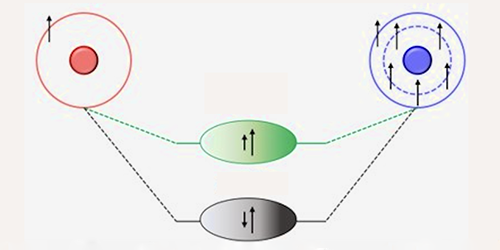A Step toward Quantum Gases of Doubly Polar Molecules
Creating a Bose-Einstein condensate (BEC) of doubly polar molecules—which possess both an electric and a magnetic dipole moment—could lead to new quantum simulation and quantum computing schemes. Now Matteo Zaccanti of the Italian National Institute of Optics (CNR-INO) and his colleagues have taken a step toward that goal by creating a dense gas of lithium-chromium (LiCr) molecules at 200 nK [1]. The researchers say that transferring the molecules to their absolute ground state could put a doubly polar BEC within reach.
Doubly polar molecules could benefit both applications and fundamental studies. The ability to control them with both electric and magnetic fields could lead to new quantum computation schemes. And quantum simulators could use the electric and magnetic dipoles to mimic complicated interactions in solids. Past attempts to create ultracold, doubly polar molecular gases have failed because the elements studied turned out to be ill suited to the go-to molecule-creation technique, in which an applied magnetic field causes atom pairs to bond.
Lithium and chromium are well suited to this technique, and LiCr has five unpaired electrons, which generate a significant magnetic moment. The team produced a dense gas of over 50,000 weakly bound molecules. The molecules had near-zero electric dipole moments, but standard laser-based schemes could bring them to their rotational–vibrational ground state, where their electric dipole moments would significantly increase. Even without this step, these molecules could form the first BEC of vibrationally excited molecules made from atoms of different species, says team member Alessio Ciamei of the Italian National Research Council. This system could be used to study so-far unexplored regimes of the BCS–BEC crossover, the transition between the analogue of a superconducting state and a BEC.
–David Ehrenstein
David Ehrenstein is a Senior Editor for Physics Magazine.
References
- S. Finelli et al., “Ultracold LiCr: A new pathway to quantum gases of paramagnetic polar molecules,” PRX Quantum 5, 020358 (2024).




